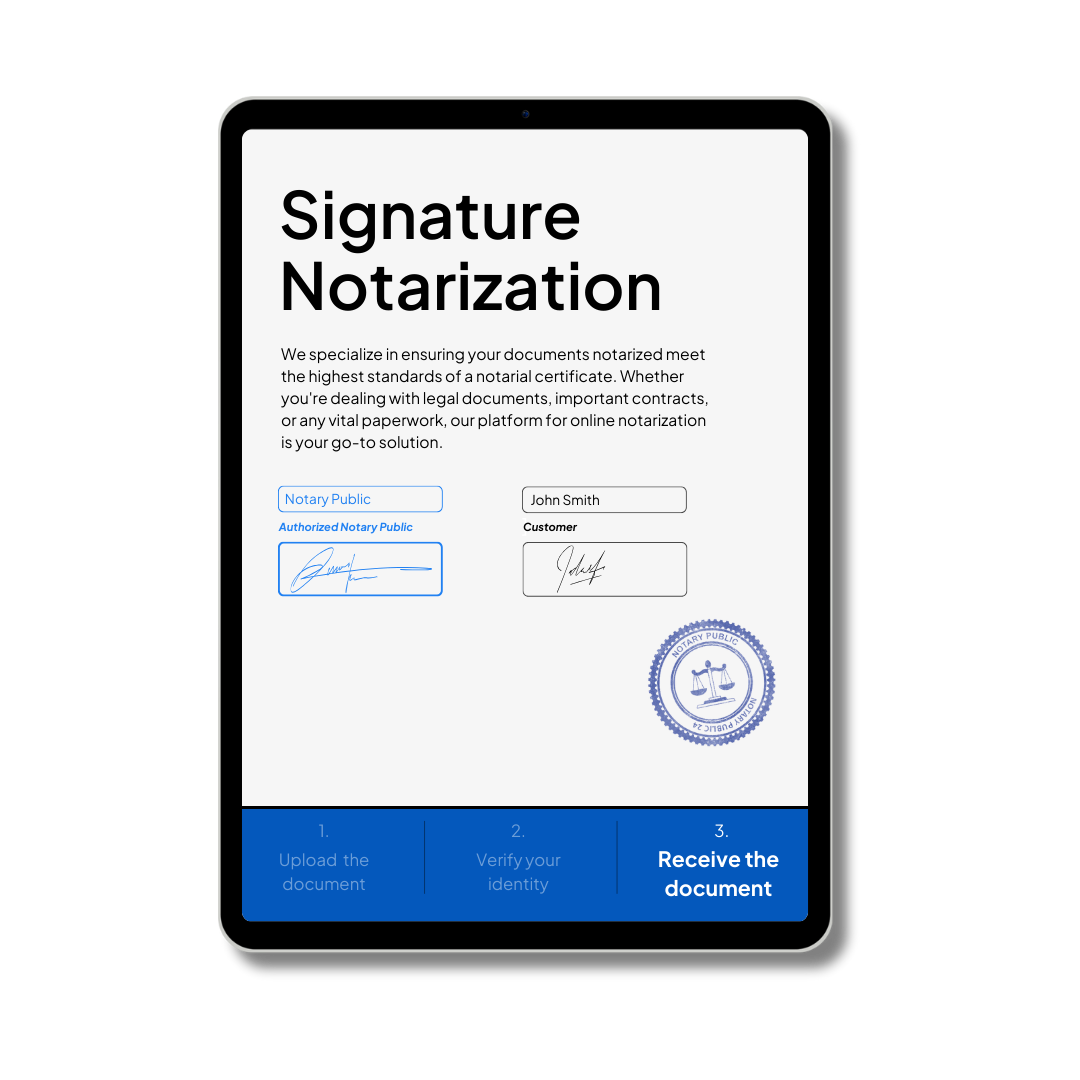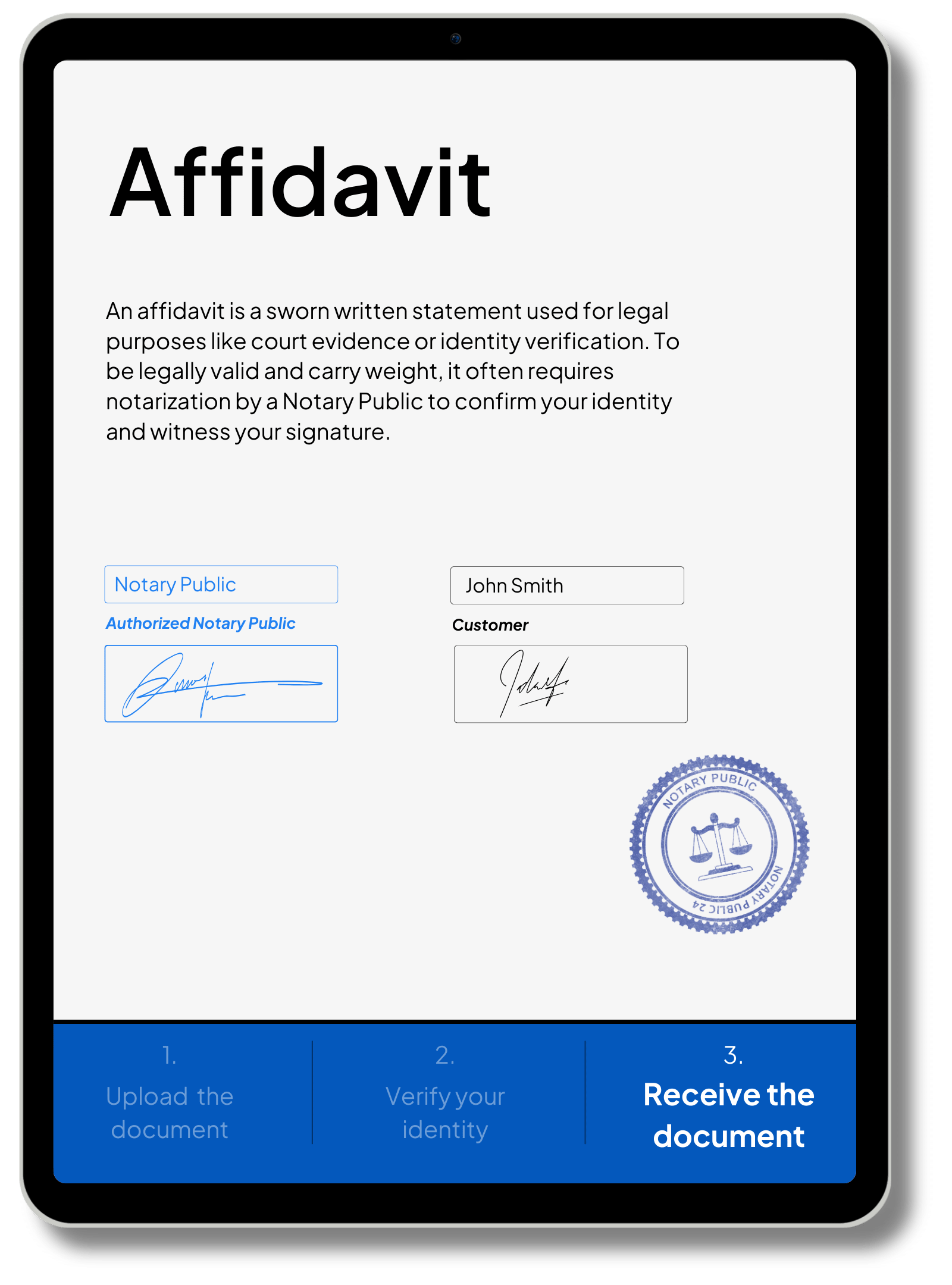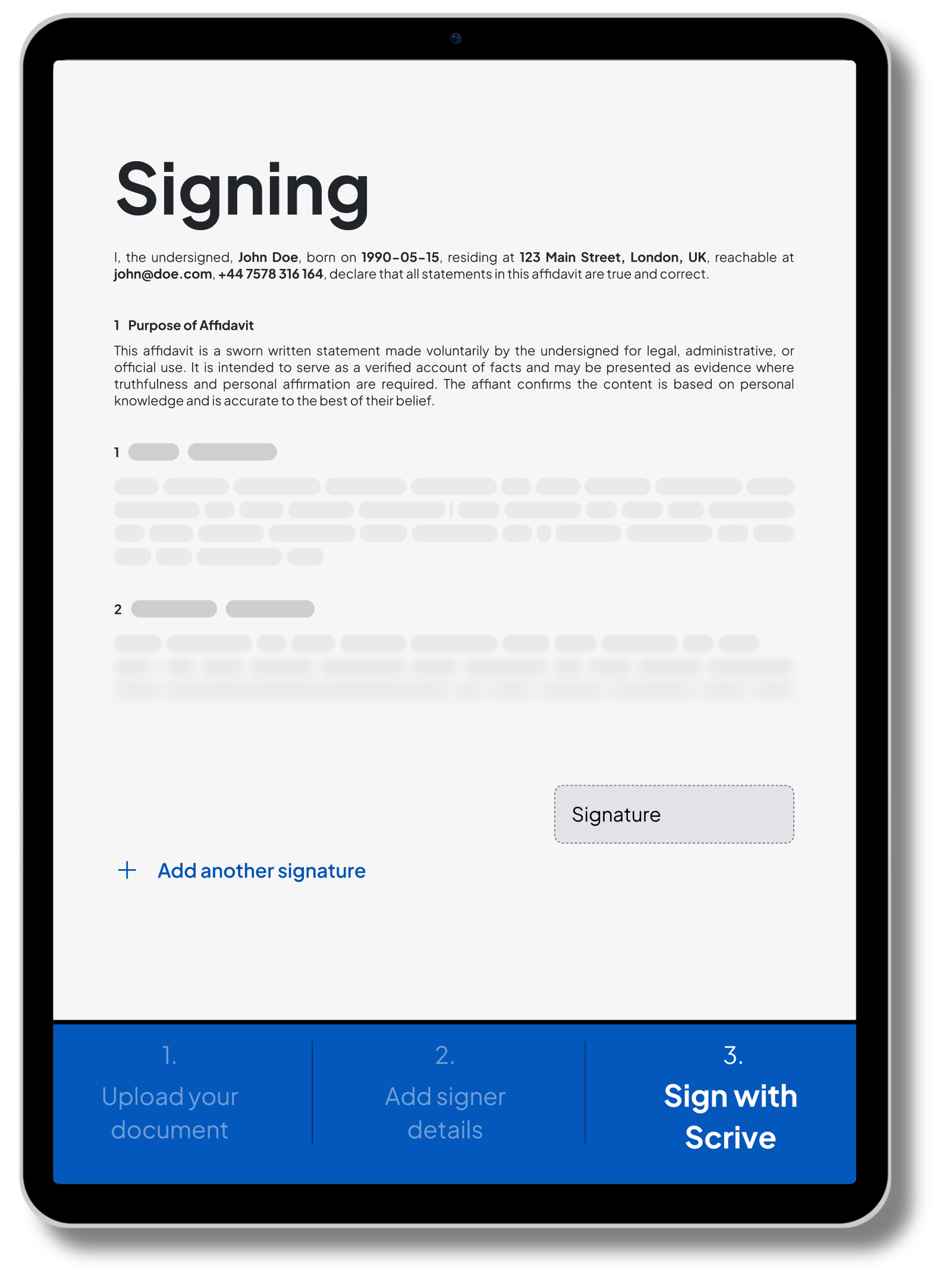When dealing with property transactions in England & Wales, the HM Land Registry often requires identity verification using forms called ID1 (for individuals) or ID2 (for corporate bodies). These forms help prevent fraud by confirming who is involved in the transaction. In this article, you will learn:
- What ID1 and ID2 forms are
- Why they are required
- How to complete, verify, and use them
- How NotaryPublic24 can support the process – including notarization and Apostille services
What Are ID1 & ID2 Forms?
An ID1 Form, also known as the “Certificate of Identity for a Private Individual,” is used when a person – acting without legal representation (i.e. no solicitor or conveyancer) – needs to verify their identity for a property or land transaction. The form collects personal information, address history, and details of identification documents.
An ID2 Form, officially called the “Certificate of Identity for a Body Corporate,” is used when a company or corporate entity is participating in a land or property transaction, again without a solicitor or conveyancer handling identity verification.
The ID2 form includes not only personal identification information for the person acting, but also company registration details, proof the individual is authorized to act on behalf of the corporate body, and specifics of the company’s status.
Key similarities and rules:
- Both ID1 and ID2 forms must be completed, signed, and dated no more than three months prior to lodgement with HM Land Registry.
- They are not publicly inspectable under normal circumstances.
- In many land registry applications, each party (seller, buyer, attorney, etc.) must submit their own ID1 or ID2 if not legally represented.
- These forms are integral to evidence of identity requirements in HM Land Registry’s Practice Guide 67.
Why ID1 and ID2 Identity Verification Matter
Combat Fraud & Protect Title
One of the primary reasons for requiring ID1 / ID2 verification is to reduce fraud in property transactions. The Land Registry has a legal obligation to ensure that only legitimate parties exercise ownership rights. Requiring solid identity verification helps protect against identity theft, fraudulent conveyancing, and wrongful registrations.
If parties submit applications without correctly verified identity, the Land Registry may refuse or delay registration of deeds, transfers, mortgages, or new ownership.
Legal & Transactional Requirement
Many property-related actions trigger a requirement for identity confirmation via ID1 or ID2. Examples include:
- Transfers of land or ownership
- Granting or releasing mortgages (charges)
- New registrations of unregistered land
- Lease assignments, surrenders, and other changes of title
- Changes in property name or address not managed by a conveyancer
In each of these cases, if the person acting is not a solicitor or conveyancer, the Land Registry demands proof of identity via ID1 or ID2.
Exceptions & Minimum Value Thresholds
In some specific scenarios, ID1 / ID2 forms are not required:
- If the true value of the land involved is £6,000 or less, identity verification is often exempt.
- Some voluntary first registrations, especially where deeds are not lost or destroyed and the party is represented by a conveyancer, may be exempt.
- When a facility letter is granted by HM Land Registry, that can waive the identity requirement.
Always check the latest rules in HM Land Registry’s Practice Guide 67: Evidence of Identity for up-to-date exemptions and procedures.
How to Complete & Verify ID1 / ID2 (Without Video Verification)
Here is a step-by-step guide to completing and verifying ID1 and ID2 forms under the model that does not require live video calls:
Step 1: Obtain and Fill the Form
Download the official ID1 or ID2 form directly from HM Land Registry.
- In Section A, fill in your personal (or corporate) details, address history, and information about the identification documents you will use.
- For ID2, also provide company registration number, registered address, and evidence that the individual signing is authorised.
- For both, if the applicant has changed name (deed poll or statutory declaration), include that detail.
Step 2: Provide Supporting Identity Documents
You must submit printed or scanned copies of:
- A valid photographic identity document (passport, driving licence, etc.)
- Proof of address (recent utility bill, bank statement, etc.)
- Passport-style photographs in some cases (especially for ID1)
The verifier must be satisfied the identity documents match the applicant.
Step 3: Identity Verification by a Qualified Professional
Identity must be verified by an approved professional in person or via approved verification channels (document + biometric methods). Eligible verifiers include:
- Solicitors
- Licensed conveyancers
- Chartered Legal Executives certified for conveyancing
- Notaries Public
- Others authorised under HM Land Registry’s rules
The verifier checks the applicant’s ID documents and completes Part B or C of the form, confirming they have seen originals and are satisfied with identity.
Step 4: Dating and Signing
Ensure the completed form is signed and dated – the date must be within three months of lodging with the Land Registry. Incorrectly dated or stale forms can invalidate your application.
Step 5: Submission to HM Land Registry
Once verified, the ID1 or ID2 form is submitted along with your main land registration or property transaction application. It may be submitted by post or via your conveyancer if applicable.
The identity information will be used to support your application and satisfy HM Land Registry’s identity checks.
Special Cases: Applicants Living Overseas
If the applicant is outside the UK and cannot have identity verified by a UK professional, it’s allowed that *a lawyer or Notary Public in their jurisdiction may complete the verification. The form should include their registration and qualification details.
This flexibility ensures that UK property transactions can still proceed when parties reside abroad.
How NotaryPublic24 Can Help with ID1 / ID2 Verification & Certification
NotaryPublic24 provides robust document-based identity verification combined with online notarization and Apostille services. This aligns well with the ID1 / ID2 process where in-person or document validation is sufficient.
Here’s how NotaryPublic24 can support your ID1 or ID2 workflow:
- Form Verification & Upload
You can upload your completed ID1 or ID2 form along with scans or clear photos of your identification documents.
- Identity Checking with Biometrics / Document Matching
Our platform uses biometric or algorithmic checks to ensure the ID documents match the applicant. This replicates a professional verifier’s control over document authenticity in a digital environment.
- Notarial Certification
After the identity is verified, our Notary Public can certify that Section B or C of the ID1 or ID2 form has been properly completed and that the identity proof has been checked. This gives formal verification that the identity was reviewed by a recognized legal qualifier.
- Apostille & International Use
If your verified ID1 or ID2 form must be used abroad, you can optionally request an Apostille through the same workflow. That ensures the authenticity of the notary’s signature is recognized in other countries under the Hague Convention.
- Speed and Convenience
The entire process is handled online, eliminating the need to visit a solicitor’s office. After upload and verification, notarized / certified forms can be returned quickly – often within 24 hours.
- Legal Validity & Compliance
NotaryPublic24 ensures compliance with legal standards for notarization and certification of identity documents in the UK. Documents processed are accepted by relevant authorities when done properly.
By combining identity verification, document certification, and optional Apostille in one platform, NotaryPublic24 offers a simplified, secure, and time-saving path for handling ID1 / ID2 requirements for property transactions.
Useful Tips & Best Practices
- Always double-check that your identification documents are current and valid – expired IDs may be rejected.
- Provide clear, high-resolution scans or photos of your documents to ensure biometric matching works.
- Submit the completed ID1 or ID2 form with supporting documents within three months of verification to avoid invalidation.
- If you live abroad, you can easily choose NotaryPublic24 to certify under UK property transaction standards.
- Use notarization and Apostille only when requested – many identity verifications only require certification, not Apostille, unless international use is intended.
Common Questions on ID1 / ID2 & NotaryPublic24
Can NotaryPublic24 handle ID2 verification online?
Yes. You can upload your completed ID2 form, provide company and personal authorization documents, and our platform will verify identity and certify the form via a Notary Public.
Do I always need a notary for ID1 / ID2 forms?
Not always. If you use a solicitor or conveyancer to verify identity in person, that is acceptable under HM Land Registry rules. However, a Notary Public ensures higher formality and may ease cross-border acceptance.
When would an Apostille be required for ID1 / ID2 forms?
You may need an Apostille if the verified ID form will be used in a foreign jurisdiction or country that demands notarized documents to be legalized under the Hague Convention.
What happens if I submit an out-of-date ID1 / ID2 form (older than 3 months)?
HM Land Registry may reject or delay processing of your application. The form must be signed and dated within 3 months before lodgement.
Can I verify my ID1 / ID2 form if I live outside the UK?
Yes. If you reside overseas you can use NotaryPublic24 to certify Section B of your ID form.
Summary
ID1 and ID2 forms are essential tools used by HM Land Registry to confirm identity in property and land transactions involving individuals or corporate bodies acting without legal representation. They help protect against fraud, ensure legitimacy of ownership, and facilitate smooth title registrations.
NotaryPublic24 offers a modern, fully online alternative to traditional identity verification. You can upload your completed ID1 or ID2 form and supporting documents, undergo biometric and document checks, and then receive a Notary Public–certified version of your form – optionally with an Apostille for international works – within 24 hours.
If you’re preparing a property transaction and need your identity verified quickly, accurately, and in full compliance with UK Land Registry standards, contact NotaryPublic24 today. Let us manage your ID1 / ID2 verification, notarization, and certification end-to-end, so you can focus on your property processes without delay.




